It was in March 1999 (Mar 27, according to the date stamp on one of the photos) that I and Subhash went skiing. It was near the end of the skiing season - so I wasn't very sure of our chances of finding any of the places open - we had only two choices: Snoqualmie Pass (wikipedia link, WA DOT link) and Steven's Pass (they also have a live webcam). There is skiing on Hurrican Ridge too, but that wasn't a very practical alternative.
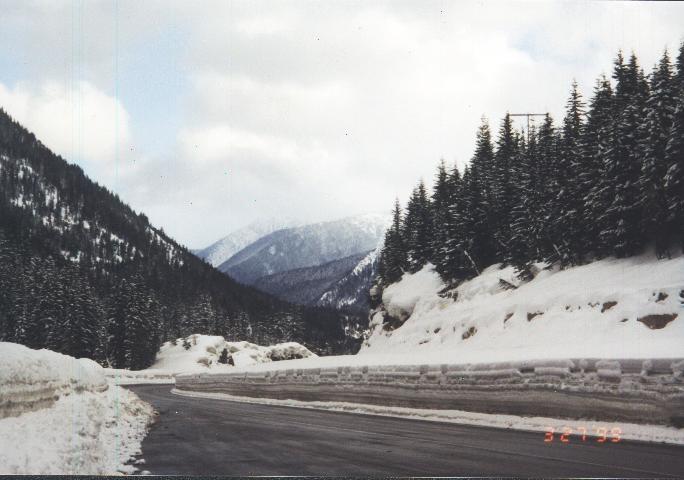
This description is from a web site (http://www.gonorthwest.com/)
Stevens Pass, elevation 4,061 feet, is on US Highway 2 - the Stevens Pass Greenway - and is one of two east-west highways with mountain passes open year-round in Washington State. The other is I-90, to the south, which crosses Snoqualmie Pass.
The 105-mile Stevens Pass scenic byway winds through the rugged, forested Cascade Mountains and runs beside the wild and scenic Skykomish and Wenatchee rivers along most of its length. Year-round recreation opportunities include white-water rafting, hiking, skiing and auto touring. Travelers are advised to carry tire chains and monitor weather conditions during snow season.
Here is the Washington State Dept of Transportation (DOT) web page that lists all passes in the state, the Steven's Pass page also has a live webcam.
As it turned out, the weekend was the last weekend of skiing at Steven's Pass, after which they would close for the season, and open only in November or December, depending on when the first snowfall hit the pass.
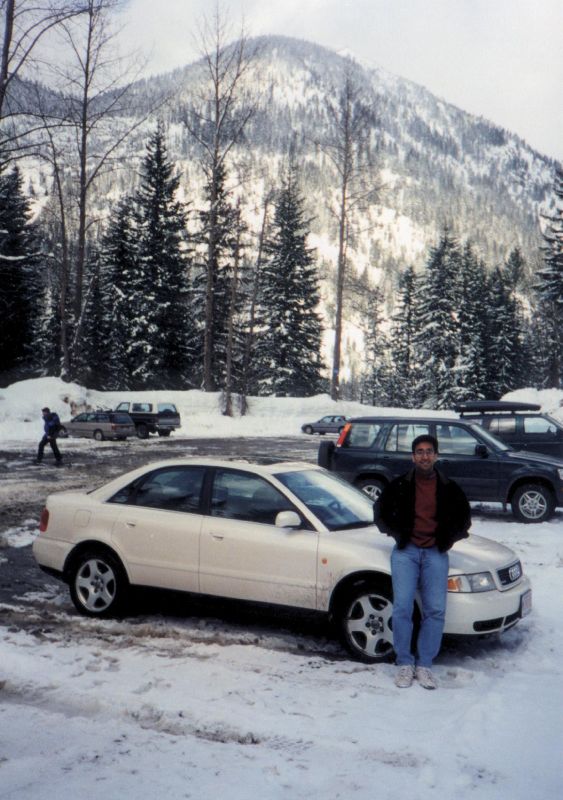

This description is from a web site (http://www.gonorthwest.com/)
Stevens Pass, elevation 4,061 feet, is on US Highway 2 - the Stevens Pass Greenway - and is one of two east-west highways with mountain passes open year-round in Washington State. The other is I-90, to the south, which crosses Snoqualmie Pass.
The 105-mile Stevens Pass scenic byway winds through the rugged, forested Cascade Mountains and runs beside the wild and scenic Skykomish and Wenatchee rivers along most of its length. Year-round recreation opportunities include white-water rafting, hiking, skiing and auto touring. Travelers are advised to carry tire chains and monitor weather conditions during snow season.
Here is the Washington State Dept of Transportation (DOT) web page that lists all passes in the state, the Steven's Pass page also has a live webcam.
As it turned out, the weekend was the last weekend of skiing at Steven's Pass, after which they would close for the season, and open only in November or December, depending on when the first snowfall hit the pass.

Since neither of us had skied before, classes were needed. It's also good that Steven's Pass had cross-country skiing, which, while less exciting than downhill skiing, is also easier to try if one is trying skiing for the first time.
There was a special package available, that included a day pass, skis, boots, and a one hour group training session. Lucky day that it was for us, we were the only ones there that day who were skiing there with a single day pass - everyone else there had season passes or had their own ski equipment. We ended up getting a personal lesson that day!
The fun thing about falling on your posterior in snow is that it doesn't hurt, at all. I fell down that day at least a hundred times, without so much as a hint of a sore butt to show for it. And, if it is cold enough, as it was that day, the snow is powdery enough that it doesn't soak your jeans either. Skiing with a wet jeans is not very nice, though if you have to have one part of your body wet with melted snow, the posterior is the one.
Once we figured out that the key to successful skiing, at least cross country, is to learn to balance your weight, it was loads of fun after that. Three hours or so on the trails - about two hours uphill and one hour downhill - is one of the best cardio workouts you could imagine, and that too without running up a sweat. You do sweat, but you don't feel it - it's cold, that's why.
Subhash was nice enough to shoot some photos of mine, on my two feet as well as when I was on all fours.
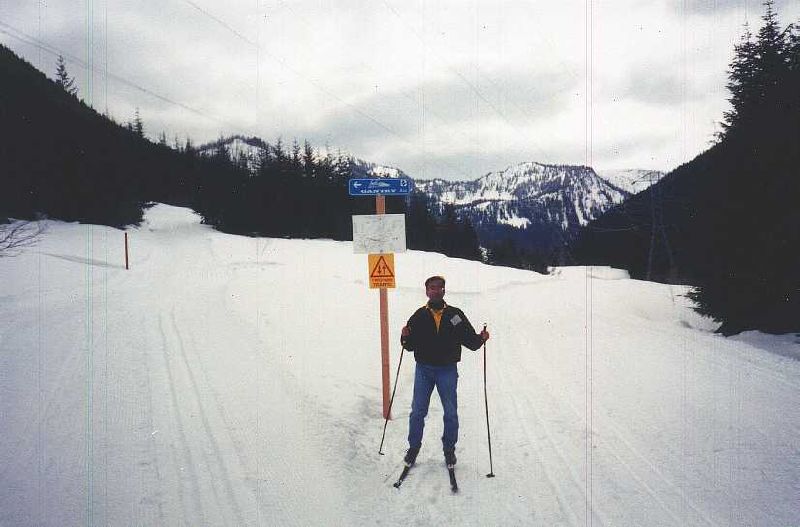
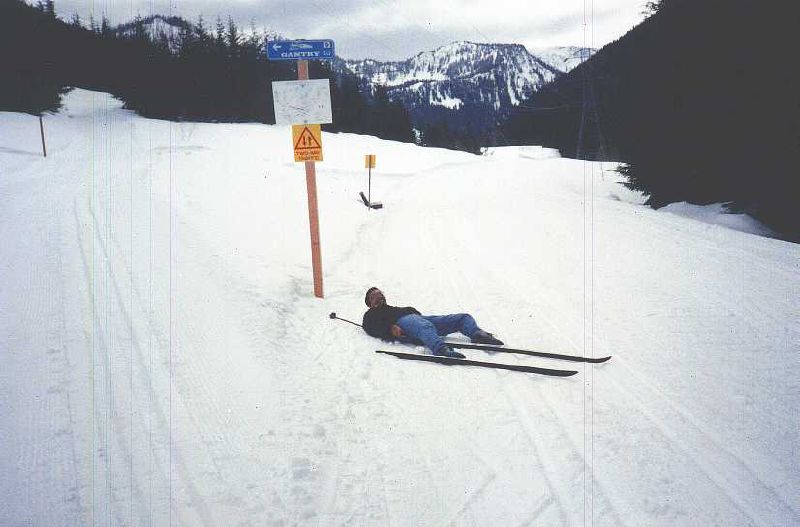
There was a special package available, that included a day pass, skis, boots, and a one hour group training session. Lucky day that it was for us, we were the only ones there that day who were skiing there with a single day pass - everyone else there had season passes or had their own ski equipment. We ended up getting a personal lesson that day!
The fun thing about falling on your posterior in snow is that it doesn't hurt, at all. I fell down that day at least a hundred times, without so much as a hint of a sore butt to show for it. And, if it is cold enough, as it was that day, the snow is powdery enough that it doesn't soak your jeans either. Skiing with a wet jeans is not very nice, though if you have to have one part of your body wet with melted snow, the posterior is the one.
Once we figured out that the key to successful skiing, at least cross country, is to learn to balance your weight, it was loads of fun after that. Three hours or so on the trails - about two hours uphill and one hour downhill - is one of the best cardio workouts you could imagine, and that too without running up a sweat. You do sweat, but you don't feel it - it's cold, that's why.
Subhash was nice enough to shoot some photos of mine, on my two feet as well as when I was on all fours.


No good deed should go unpunished. So, when it came to my turn with the camera, knowing that my good friend was as much a ski expert as I was, all I had to do was to aim the camera at him, and wait. And I didn't have to wait too long...
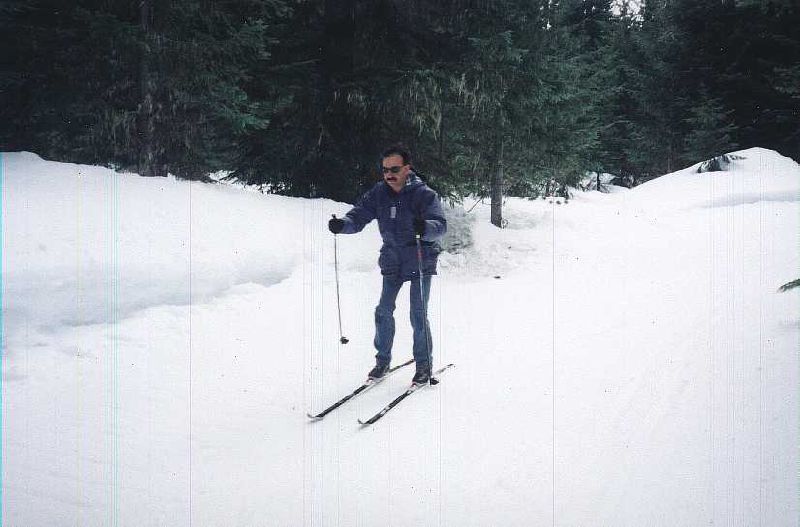
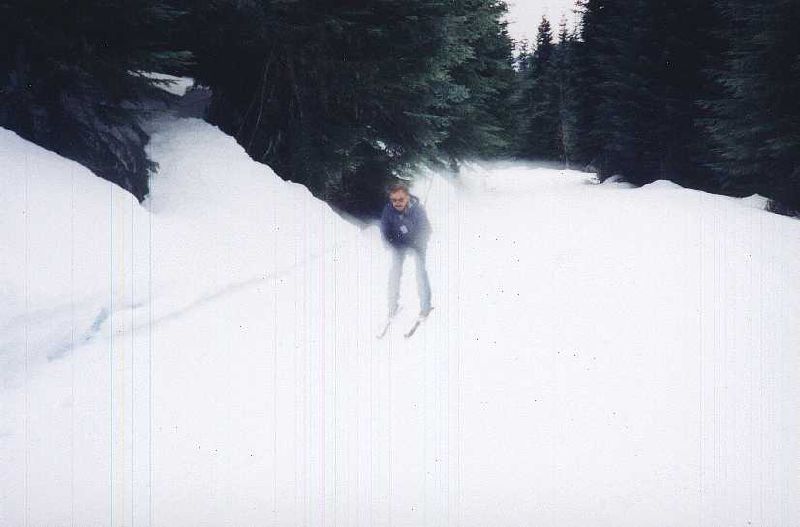
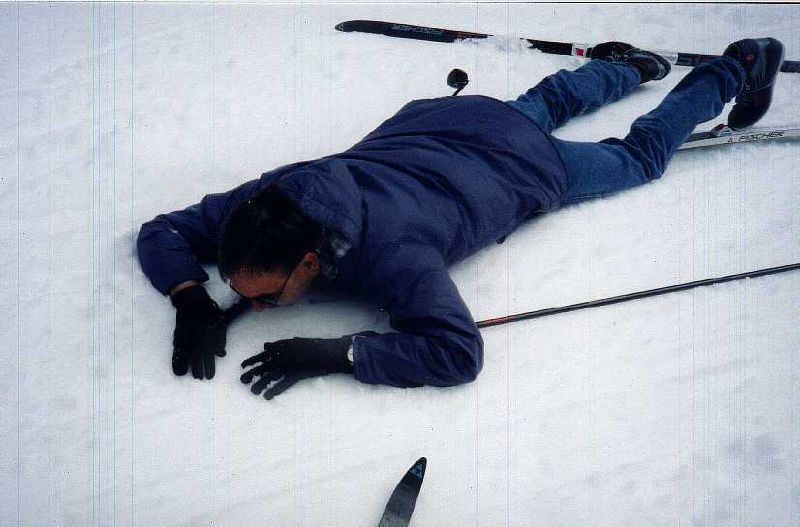



A couple of weeks later we went to Mt Hood for downhill skiing - which was even more fun. We took the beginner's slope there.
© 2006, Abhinav Agarwal (अभिनव अग्रवाल). All rights reserved. Re-posted to this blog June 2013